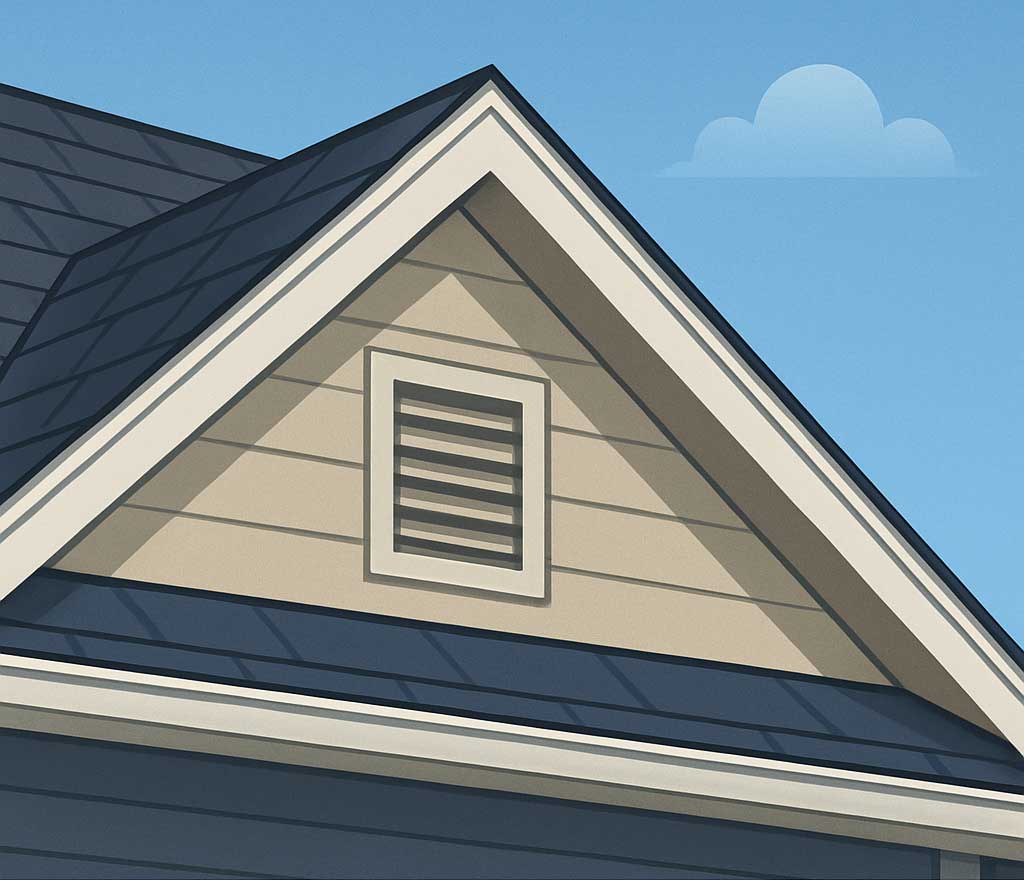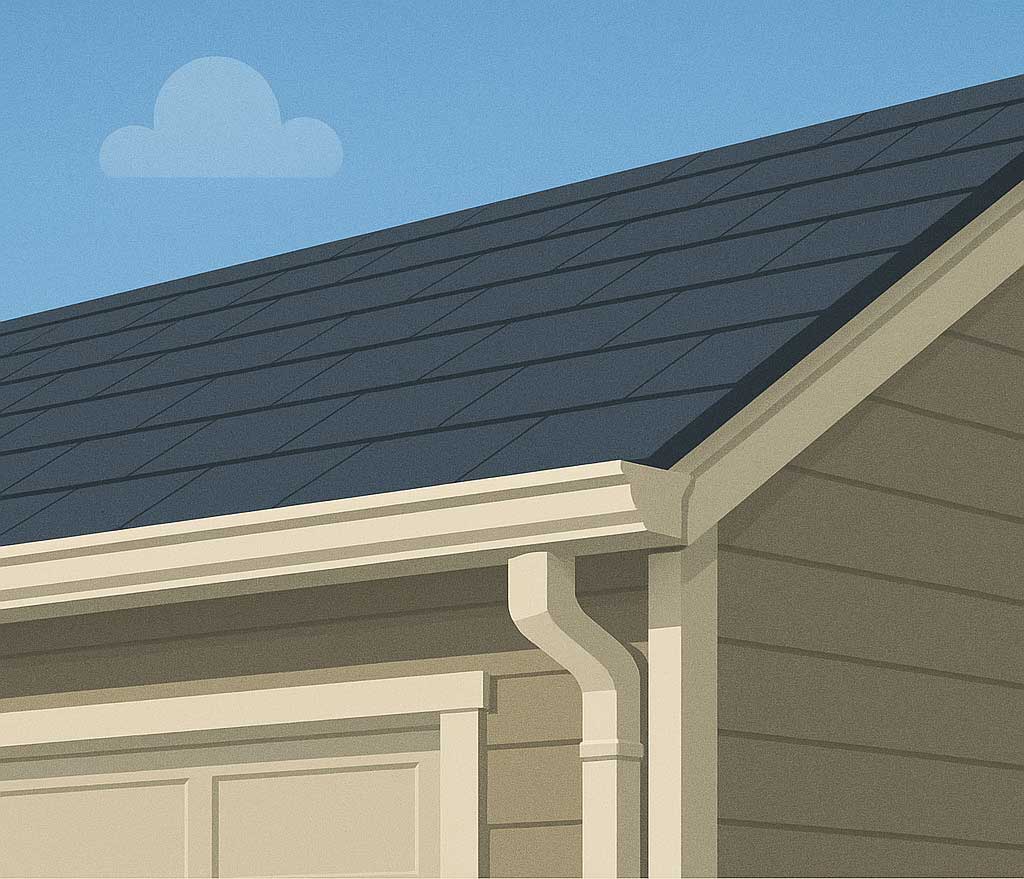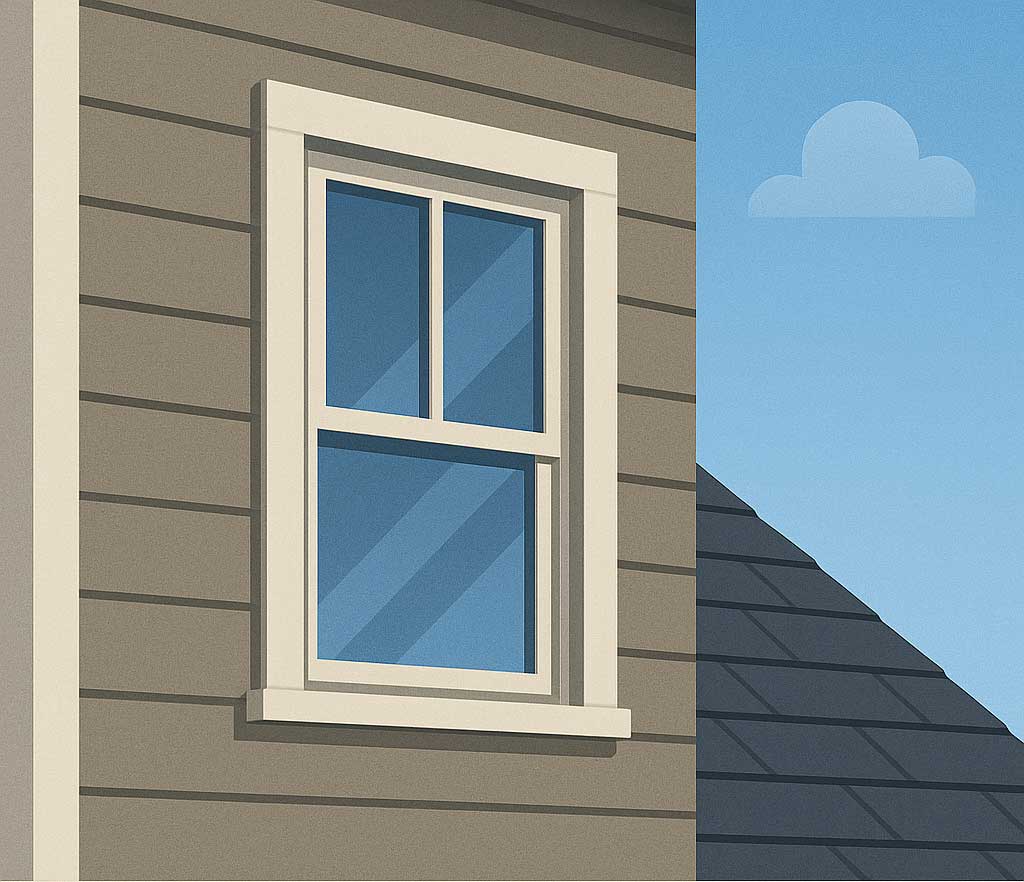Why is Defensible Space So Important?
Wildfire is a year-round threat in Napa County. Historic wildfires, such as the 2017 LNU complex or 2020 Glass Fire have shown us firsthand how quickly flames can move through our valleys and hillsides. Defensible space is one of the most important steps you can take to protect your home — and your neighbors — from Napa’s next fire. Your defensible space slows fire spread, reduces ember ignition, and provides firefighters a safer place to defend your property. Creating defensible space doesn’t mean clearing everything, it means making smart choices about placement, spacing, and maintenance.
- Zone 0
- Zone 1
- Zone 2
- Firewise Landscaping
Zone 0 (0-5 feet): Ember-Resistant Zone
Most homes are lost to wildfire when windblown embers ignite something right next to the house. This zone is your most critical defense.
What to Do
- Remove dead plants, leaves, needles, and debris from roofs, gutters, decks, and stairs.
- Keep the first 5 feet around your home clear of combustibles like firewood, lumber, garbage bins, outdoor furniture, or planters.
- Replace bark, wood, or rubber mulch with rock, gravel, or hardscape.
- Trim tree branches within 10 feet of chimneys and at least 5 feet away from roofs and siding.
- Mature, healthy oaks, redwoods, or shade trees can stay — embers ignite fuels on the ground, not in living canopies.
Zone 1 (5-30 feet): The Home Protection Zone
Fires in our canyons and hills can spread fast. This zone should slow flames and prevent direct fire spread to your home, while also conserving water and supporting native plants.
What to Do
- Maintain plants — keep them green and pruned; remove dead or unhealthy material.
- Space it out — separate shrubs, trees, and structures so fire can’t jump between them.
- Prune trees — remove lower branches (6–10 feet up for tall trees, bottom third for smaller ones).
- Maintain at least 10 feet between tree canopies and homes, sheds, or decks.
- Use hardscape — granite paths, stone walls, or dry creek beds can act as fuel breaks between plantings.
- Choose wisely — favor California natives like manzanita, toyon, or ceanothus; avoid flammable ornamentals such as Italian cypress.
- Mulch smart — use composted wood chips (2–4 inches deep); avoid rubber or plastic mulches.
- Groundcovers — keep lawns or groundcovers irrigated and under 6 inches tall.
Zone 2 (30-100 feet): The Reduced Fuel Zone
On steep slopes and ridgelines, fire gains speed and intensity. In rural areas of Napa County, Zone 2 often overlaps with neighbors’ vineyards or open land — coordinated efforts here protect entire communities.
What to Do
- Cut or mow annual grasses to 4 inches or less.
- Maintain horizontal spacing between trees and shrubs, and vertical spacing between grasses, shrubs, and tree canopies.
- Remove fallen leaves, needles, bark, and small branches if deeper than 3 inches.
- Maintain a 10-foot bare soil ring around stacked woodpiles.
- Around outbuildings and propane tanks: clear 10 feet of bare soil in all directions plus another 10 feet with no flammable vegetation.
- Avoid stripping land to bare dirt — Napa’s hillsides are prone to erosion and mudslides if vegetation is completely removed.
Defensible space doesn’t mean stripping your yard bare. With thoughtful planning, you can have a landscape that is beautiful, climate-appropriate, water-wise, and fire-resilient. In Napa, where homes often sit next to vineyards, oak woodlands, and chaparral, the plants you choose and how you maintain them can make all the difference.
Principles of Firewise Landscaping
- Maintenance matters most — all plants will burn if neglected. Regular watering, pruning, and clearing dead material are more important than plant choice.
- Group, don’t mass — plant in small clusters with open space or hardscape between, rather than large continuous beds of shrubs.
- Layer for safety — low groundcovers, then shrubs, then trees, with vertical spacing so fire can’t “ladder” upward.
- Use hardscape creatively — rock mulch, gravel paths, patios, and dry creek beds break up fuels and double as attractive design elements.
- Irrigate wisely — drip irrigation conserves water and keeps plants healthy, especially critical in Napa’s hot, dry summers.
Better Plant Choices
When selecting plants for Napa yards and homes:
- Favor California natives that are drought-tolerant and low-resin (e.g., ceanothus, toyon, manzanita, native sages).
- Choose broadleaf evergreens and deciduous trees rather than conifers, which ignite more easily.
- Pick shrubs with supple, high-moisture leaves (e.g., coffeeberry, bush anemone).
- Use irrigated low groundcovers (e.g., yarrow, creeping thyme) to replace flammable grasses.
Plants to Avoid of Limit
- Highly flammable ornamentals such as Italian cypress, juniper, or pampas grass.
- Plants that produce oily or resinous litter (eucalyptus, pine, cedar).
- Invasive species that spread aggressively and create hazardous fuel loads (arundo, Scotch broom).
Mulch Guidance
- Use composted wood chips (2–4 inches) for water conservation and weed suppression.
- Avoid bark nuggets, shredded redwood, or rubber mulch — all ignite easily and burn intensely.
- Around the first 5 feet of your home, stick to rock or gravel only.
A Napa landscape that looks good, conserves water, supports pollinators, and makes it harder for wildfire to spread to your home.
County of Napa Resources & Tools
Creating defensible space isn’t just good practice, it’s required by law in Napa County. Use the County’s online tools to:
- Learn the Defensible Space Municode
- Review the Fire Marshal’s Office FAQ
- Submit a County Defensible Space Complaint Form
- Take advantage of the Napa County funded Chipping Program
- Take the Defensible Space Self Inspection
- Find a weed abatement contractor
Beyond the Basics of Defensible Space

Zone 0 Study
The objective of the Wildfire Research project was to provide scientific data to evaluate the effectiveness of the 0–5 ft noncombustible zone, and determine whether more distance from structures is recommended.

Landscape Choices
With the right plants and care, you can create a yard that’s vibrant, water-wise, and resilient to wildfire risks. See our safe plant list to start planning your fire-smart landscape today.

Wildfire History
With over 60% of Napa County having burned since 2017, some areas are more vulnerable than others experiencing repeat wildfires.